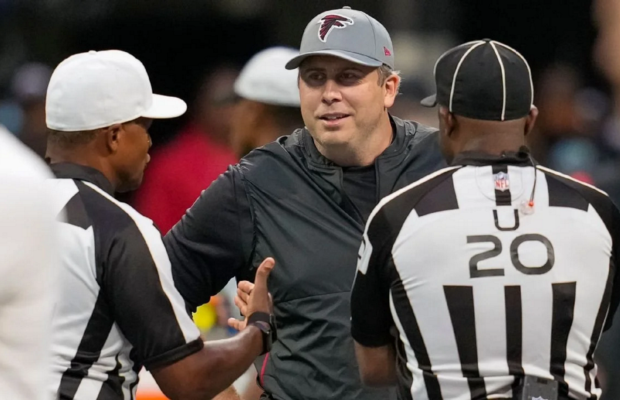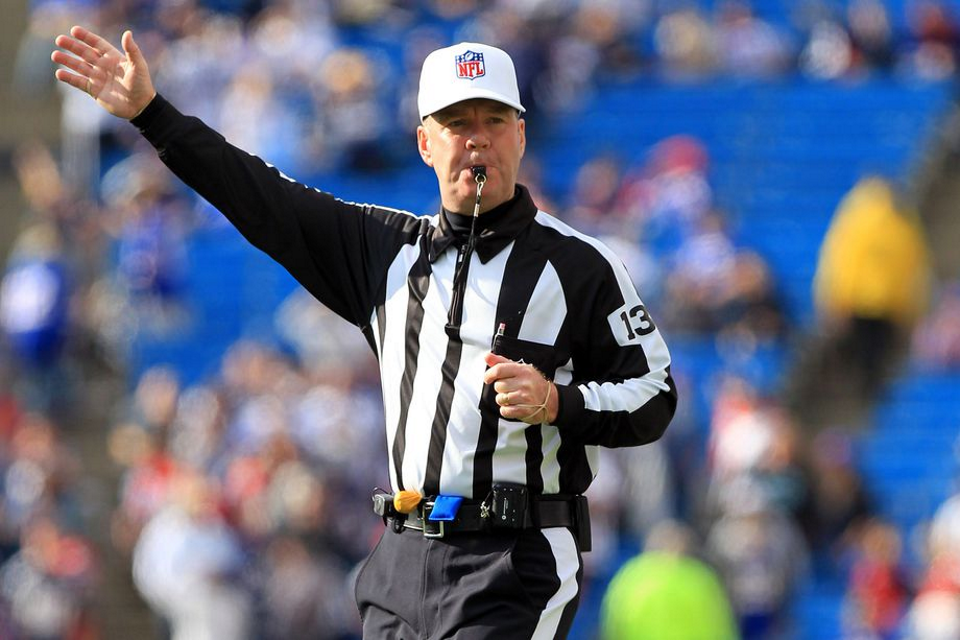Most of us look at NFL rules as a list of prohibitions. Teams see them differently. For them, the rulebook is a runway toward competitive advantage, and they focus more on what it allows.In 2021, that means figuring out how to best exploit a rule change that imposes new limits on low blocks. It means compiling dossiers on the league office employees who will make replay decisions following the retirement of senior vice president Al Riveron. And it means getting an understanding of how officials will use in-stadium replay officials in real time for help in making certain calls, per a new rule.
To better understand the insight teams have been developing this summer — you know they aren’t sharing it publicly — we picked the brain of retired NFL referee and current ESPN officiating analyst John Parry. Defensive backs, Parry believes, will be disproportionately impacted by the low block rule, giving offenses a lane for more effective outside runs and screen plays. Parry also suggested that unexpected uncertainty about the replay process could make coaches less willing to challenge plays, and he said there is “a 100% chance” that referees will use their replay officials for more than the new rule allows.
We published a full accounting of every 2021 rule change this spring, and what follows is an edited version of questions posed to Parry about how they might impact the game and playcalling in 2021.
 Seifert: Let’s start with low blocks. Starting this season, blocks below the waist will be allowed only within a newly-created tight end box, defined as 2 yards outside the offensive tackles and 5 yards on either side of the line of scrimmage. That is the only area where linemen can cut block and defenders can go low. Where does the upper hand go?
Seifert: Let’s start with low blocks. Starting this season, blocks below the waist will be allowed only within a newly-created tight end box, defined as 2 yards outside the offensive tackles and 5 yards on either side of the line of scrimmage. That is the only area where linemen can cut block and defenders can go low. Where does the upper hand go?
Parry: The running game, certainly. To me, this rule has created a matchup advantage for the big offensive lineman who is coming to the perimeter on the outside run or the screen play. You get that big guy coming to block people who don’t have an option for taking on the block. That’s something teams can leverage and exploit. You might see offensive coordinators moving more of their run game to the outside for that reason. Maybe that’s part of the reason why Andy Reid went out and got a bunch of new linemen in Kansas City.
Seifert: But wouldn’t the linemen also be disadvantaged? They’ve lost the cut block out there.
Parry: To me, the offensive guy always had multiple options for that block, based on angles, speed and where the defender is. He could choose to cut block or stay high and just run over the defender. He has options. But the defender, as I see it, has only one now. That’s to stay high, and based on the size and weight differential, that may not end so well.
Seifert: This rule is presumably about protecting players from lower-body injuries. Is there something special about the interior of the tight end zone that makes it safe to cut block or for defenders to go low in that particular area?
Parry: Sometimes when the league discusses rule changes, they leave meat on the bone and don’t go far enough. I guess I would have liked to have seen the data they used for this, but I would not be surprised if down the road, assuming players adjust to this as they usually do, they say you can’t block low anywhere on the field. Maybe they didn’t go far enough this time. Maybe they did. Maybe in a few years we’ll see the box disappear altogether.
Seifert: Another change that has seemed possible in the near-future is a sky judge — someone who could make officiating calls based on what they see on a television feed in the sky box. The NFL still hasn’t moved in that direction, but they did come up with a way for the existing replay official to help referees on certain objective calls. Will this help?
Parry: The intent is to fix things that are very specific, very clear and objective. Is the foot out of bounds? Is the ball clearly out? The intent is to move the game along correctly without the coach needing to use a challenge. But it should really only be used as a safety net and a backstop. If we put too much pressure on somebody upstairs, most of whom have never been on the football field as an official, the end result long-term will not be good.
Seifert: Former NFL officiating chief Mike Pereira has been pretty public over the years in saying that referees were already seeking and receiving help from replay officials during the game through their wireless headsets, despite no rule that allowed it. Has that been what you’ve seen and experienced?
Parry: Yes. We see officials huddle. We see hands on the hips and on the earpiece, and that’s because they’re talking to this individual in the press box. And because it is loud, they continue to hold that earpiece into the ear so they can hear it better, and they’re asking more questions to them.
Seifert: So now that cooperation on certain types of calls is allowed, what are the chances that officials tap their replay officials for help on plays that aren’t covered by this rule?
Parry: 100%. I can tell you from my years on the field, we did it. They don’t always have help to give, but officials are going to ask for it. Believe me, they’ve been using it. When they put an earpiece and a way to communicate between two human beings, they’re going to use it. That’s happened since they put the earpiece in the officials’ ears years ago. You would be amazed what you would hear if you put those earpieces on.
So yes, I believe that the seven officials on the field and the replay booth will use it for anything and everything they want to use it for. I can tell you from experience that that has been done.
Read the full article at ESPN.com

